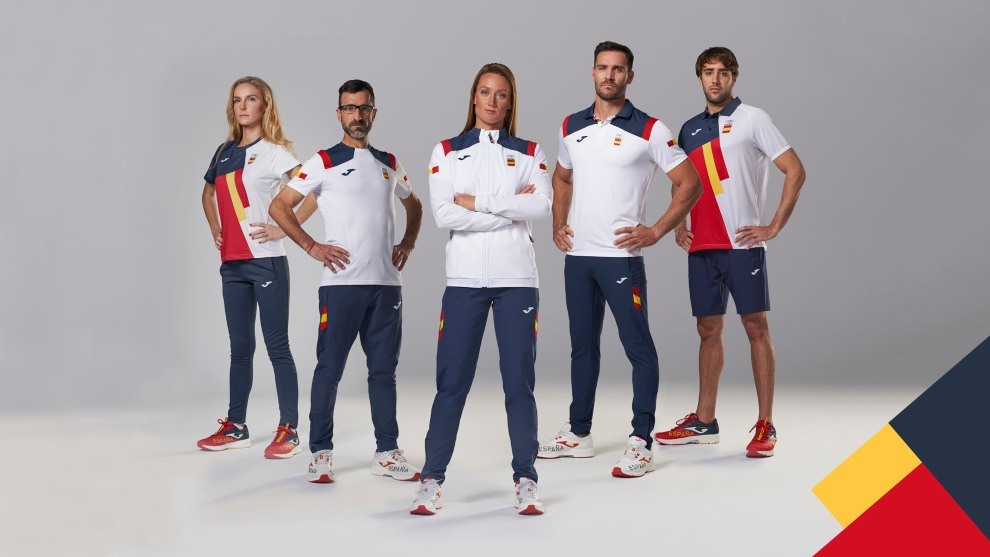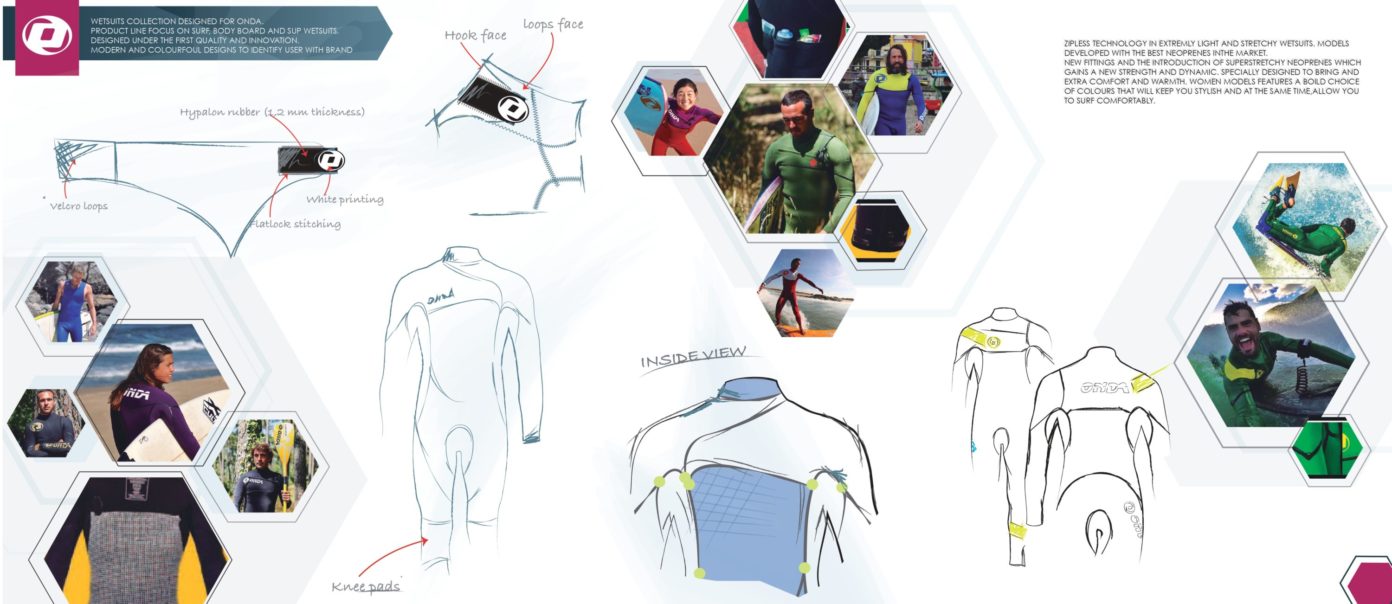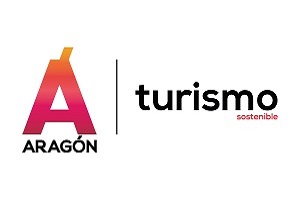José Luis Tihista from Navarre is from Zaragoza by adoption. He studied industrial design in Zaragoza and has devised, together with the sports brand Joma, the designs for the clothing of the athletes and technicians of Spain in the Olympic Games in Tokyo. He works for the best performance sports brands.
How did you get the commission to create the designs for the Olympic Games?
At that time I was working for Joma, I did different lines of design with them. We worked with several internal and external designers and they proposed me to do this collection, I guess they liked the style I had.
How is the process of designing a collection like this?
It usually starts with a briefing where the guidelines that were to be followed, both aesthetic and functional, are set. From those inputs I start working with sketches, defining the designs and the aesthetics that we like the most, until we reach the proposals that were made to the Olympic Committee.
What requirements did they ask for in this case?
There are some aesthetic requirements, such as the distinction of nationality and a series of guidelines that must be met, such as respecting the Joma logos and markings in this case.
What room is left for creativity?
Actually, quite a lot. Maybe the limit is in the colors, but it’s not a big limit either. Color is a way of identifying oneself and I wanted to maintain clear inputs. I had freedom from the brand to present different concepts and choose one that was different from other years and that represented our spirit and Spanish culture.

How have you captured this Spanish spirit?
My style is quite minimalist. I have tried to leave aside many details and focus on the way I think we have to work, we have a great previous culture of designers and all of them are defined by exquisite, simple and minimalist works. I wanted to continue in that style, to have brushstrokes that refer to the colors and the flag but in a more subjective way.
Did you want to avoid the criticism of other years?
I didn’t really look at previous kits, although you obviously have them in mind, you know they have existed, better and worse. I was very clear about my style and my idea of aesthetics, and I simply wanted to express that. I also wanted the athletes to feel comfortable and for us to reflect style and elegance. Even if it was a sports garment, we could equip them in an elegant way throughout their stay in the Olympic Village, not just for the inauguration.
“I WANTED THE ATHLETES TO FEEL COMFORTABLE AND FOR US TO REFLECT STYLE AND ELEGANCE.”
Do you think the Olympic Committee has chosen the most appropriate proposal from those presented?
Yes, several were presented and this was one of the ones I liked the most. I liked all of them because I don’t present anything I don’t like, I design what I like and I think it can be liked; but I’m happy in that sense.
In addition to that elegance, what were the technical requirements of the garments?
The functionality of the fabrics, since these are dates when it is very hot in Japan and there is a lot of humidity, so we opted for fabrics that provided a lot of breathability and that were fresh and light. Sustainability was also key, which is a guideline that the brand has been following for years and we wanted to work on it. Sustainability when selecting materials and manufacturing, so we have used recycled and recyclable fibers.
Can clothes be recycled then?
Yes, the fabrics are recyclable. This means that when it is decided that the garment will no longer be used, it can be sent to a recycling company, where the fibers are destroyed and new ones are created that can be used in new products.
What is the collection you have created in detail?
It is quite a large collection, mainly divided into two: equipment for awards, which is the clothing they wear to collect the medals, and on the other hand the equipment they wear in the Olympic Village during their stay at the Olympic Games. The first consists of a tracksuit, a polo shirt and a T-shirt; and the second, much larger, has more T-shirts, more polo shirts, swimsuits, shorts and long pants … clothes to wear throughout the day in the Olympic Village.
You can’t wait for them to get on the podium.
That’s right. I have always been attentive to every competition, I have the TV working in the background. I like the sport a lot, I follow it regularly, this year obviously I have been more attentive, even celebrating a little more, I have felt more identified. I know I’m not part of its success but I’m happy to contribute to the aesthetic part.
Who designs the competition clothing?
Each federation or athlete has its own sponsors. They are more technical garments, specific for the moment of the competition.
What feedback do you have on the clothing from the Olympic entourage?
Not personally from the athletes, because I don’t know them. Following the networks I am quite happy because I think they liked it, there are many who have shown the garments on social networks. In my sector and from my colleagues and competitors I have received a lot of compliments. I am proud.
Is it a dream come true?
I think it could be one of the most important projects of my career. As a projection it is one of the spaces that will give more image and reflects my work and I already know that it is getting feedback.
How long does it take to design a collection of this kind?
I started designing it at the end of 2017, beginning of 2018. Creating a collection like this is a long process: first the whole design part, making proposals, selecting, making changes… then I have to present it to Joma, they choose which designs to present to the Olympic Committee. They select the most appropriate proposal, although Joma and I were the main decision-makers in the design aspect. Then we had to make technical specifications, prototypes, manufacture it… and we had to take into account that the Olympic Games were going to be in 2020. It’s been almost three years since then.
Did you have to make a lot of modifications?
We have to take into account the great effort made by Joma. I think they have given 72,000 garments free of charge; it is a huge investment. From my proposal what has been done is to make it as simple as possible, because it is very complicated to equip athletes because they all have a very different physiognomy. Unfortunately, not everything can be done. The equipment is quite faithful to what was initially proposed, but with some small adaptations.
For the general public all sportswear is tracksuit, but you are dedicated to the design of performance sportswear. What is this?
I am a textile designer specialized in performance, this means for high technical level sports that demand a very high performance from the product: mountaineering, motorcycling, among others… that demand textile garments with, for example, resistance to abrasion, temperatures, etc. These are performance lines for more professional people. In this case, the garments I designed for the Olympic Games were not of the performance type, although the athletes are. We were looking for a comfortable line with a visually technical look, we have applied it in details such as the collar or cuffs, we have tried to use technical fabrics that provide comfort, but the patterns are simpler.
What performance garments have you developed?
I work for top brands, such as mountaineering brands like Ternua; crossfit brands, climbing brands like Fixe, or Buff, the international number one in running and cycling products. I also work with motorcycle and surfing brands, a sport I also practice. They are all sports that demand a high level of performance in the garments.

What role does innovation and technology play in these garments?
Very important, the truth is that one of the things I like most about my job is the access I have to that innovation. Both on the part of the manufacturers when it comes to manufacturing or when it comes to proposing fabrics by the suppliers. Nanotechnology is used in the fabrics to achieve the best performance, fabrics capable of protecting you from cold and heat at the same time, protecting you from extreme rain, extreme abrasion, elasticity…
You were working at Brembo, what does it have to do with fashion?
I am an industrial designer. It has less to do with fashion but more to do with high-performance or performance-type sports textiles. What I have always done is to solve problems, in this case to give solutions to the problems that sport or the weather gives you through patterns or fabrics. In industrial design they teach you to unite functionality and design. If at the beginning they had asked me to put textile design on a list, I would have put it on 100. Before, I had the opportunity to work at Frenco, a company that worked for Brembo and designed parts for brakes. It was the more engineering, more technical part, a part that I enjoyed. I am very grateful to that and other companies that have put their trust in me, because I would not have achieved this (in reference to the Olympic Games order) without that professional and personal development.
Have you already received any projects as a result of the OGYO assignment?
I am starting to receive some requests from some companies, including some from Aragon. For me, it’s to reaffirm that the work I’m doing I’m doing well and to be able to show that I can do all kinds of work at any level.














